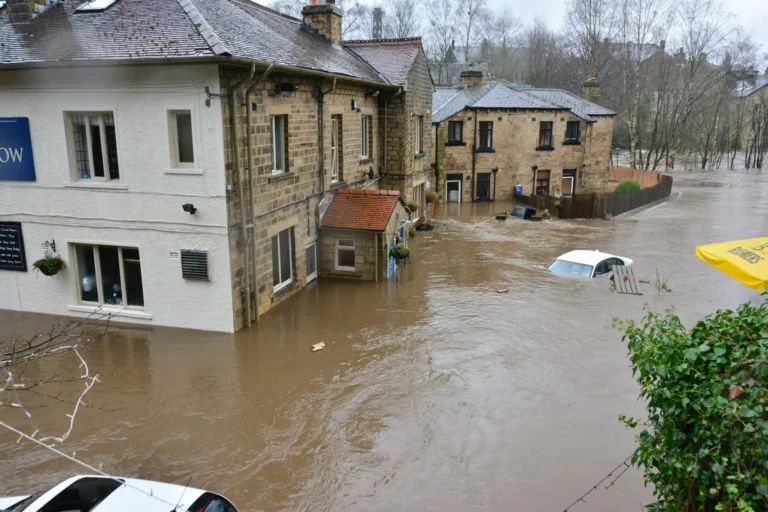By Cliff Montgomery – Jan. 14th, 2014
It’s getting harder to find clean water in America.
“State officials…reported that pollutants had been reduced in many waters, but few impaired water bodies have fully attained water quality standards,” according to a recent study released by the Government Accountability Office (GAO).
The American Spark quotes the Highlights from this eye-opening GAO report:
Why GAO Did This Study
“The 1972 Clean Water Act aimed to ‘restore and maintain the chemical, physical, and biological integrity of the nation’s waters.’ Under the act, states must establish water quality standards – for waters that do not meet these standards, states must develop TMDLs [Total Maximum Daily Loads], which EPA [Environmental Protection Agency] approves.
“TMDLs set targeted limits for pollutants but are not self-implementing – EPA and states help reduce pollutants by issuing permits for point sources, whereas they [TMDLs?] provide voluntary incentives to reduce non-point source pollution. “GAO was asked to examine the TMDL program, specifically (1) EPA’s and states’ responsibilities in developing and implementing TMDLs, (2) what is known about the status of long-established TMDLs, (3) the extent to which such TMDLs contain features key to attaining water quality standards, and (4) the extent to which TMDLs exhibit factors that facilitate effective implementation.
“GAO asked water resource experts to review a random sample of 25 long-established TMDLs and surveyed state officials who are responsible for implementing a representative sample of 191 long-established TMDLs.
What GAO Found
“The Environmental Protection Agency (EPA) and the states each have responsibilities for developing and implementing pollution targets, known as Total Maximum Daily Loads (TMDL).
“EPA oversees states’ TMDL efforts by establishing in regulations minimum requirements TMDLs need for approval, providing funding, and furnishing technical assistance. States develop TMDLs and generally take the lead in implementing them by identifying pollutants that impair water quality and taking actions to reduce them.
“Of about 50,000 TMDLs developed and approved, nearly 35,000 were approved more than 5 years ago, long enough for GAO to consider them long established.
“State officials GAO surveyed in its representative sample of 191 TMDLs reported that pollutants had been reduced in many waters, but few impaired water bodies have fully attained water quality standards.
“The sample of 25 TMDLs reviewed by water resource experts GAO contacted seldom contained all features key to attaining water quality standards. According to the National Research Council and EPA, these features—some that are beyond the scope of EPA’s existing regulations—include identifying pollution-causing stressors and showing how addressing them would help attain such standards, specifying how and by whom TMDLs will be implemented, and ensuring periodic revisions as needed.
“The experts found, however, that 17 of 25 long-established TMDLs they reviewed did not show that addressing identified stressors would help attain water quality standards, 12 contained vague or no information on actions that need to be taken, or by whom, for implementation, and 15 did not contain features to help ensure that TMDLs are revised if need be.
“GAO’s review showed that EPA’s existing regulations do not explicitly require TMDLs to include these key features, and without such features in TMDLs—or in addition to TMDLs—impaired water bodies are unlikely to attain standards.
“In response to GAO’s survey, state officials reported that long-established TMDLs generally do not exhibit factors most helpful for attaining water quality standards, particularly for non-point source pollution (e.g., farms and storm water runoff).
“The officials reported that landowner participation and adequate funding—factors they viewed as among the most helpful in implementing TMDLs—were not present in the implementation activities of at least two-thirds of long-established TMDLs, particularly those of non-point source TMDLs.
“Because the Clean Water Act addresses non-point source pollution largely through voluntary means, EPA does not have direct authority to compel landowners to take prescribed actions to reduce such pollution.
“In GAO’s survey, state officials knowledgeable about TMDLs reported that 83 percent of TMDLs have achieved their targets for point source pollution (e.g., factories) through permits but that 20 percent achieved their targets for non-point source pollution.
“In 1987, when the act was amended to cover such pollution, some Members of Congress indicated that this provision was a starting point, to be changed if reliance on voluntary approaches did not significantly improve water quality.
“More than 40 years after Congress passed the Clean Water Act, however, EPA reported that many of the nation’s waters are still impaired, and the goals of the act are not being met.
“Without changes to the act’s approach to non-point source pollution, the act’s goals are likely to remain unfulfilled.
What GAO Recommends
“GAO recommends that EPA issue new regulations for TMDL development, adding key features.
“Further, Congress should consider revising the Clean Water Act’s approach to addressing non-point source pollution. EPA did not comment on the matter for Congress. The agency agreed with the need to add key features to TMDLs but did not agree to issue new regulations.
“GAO believes new regulations are needed.”





